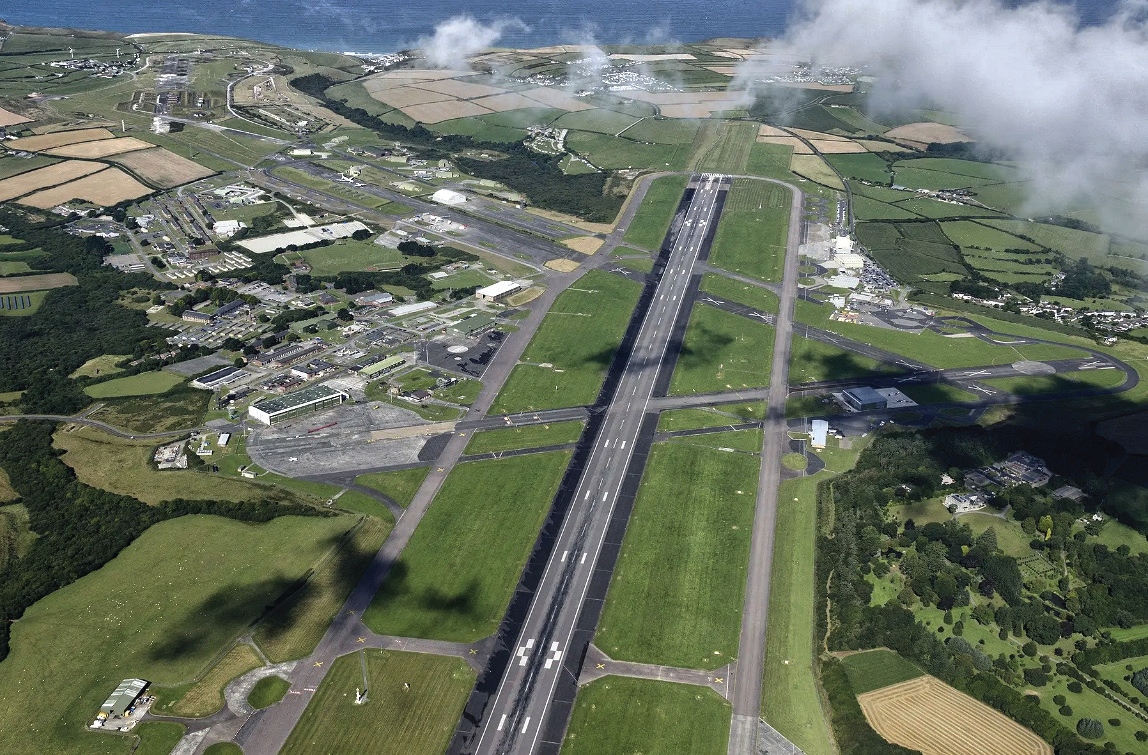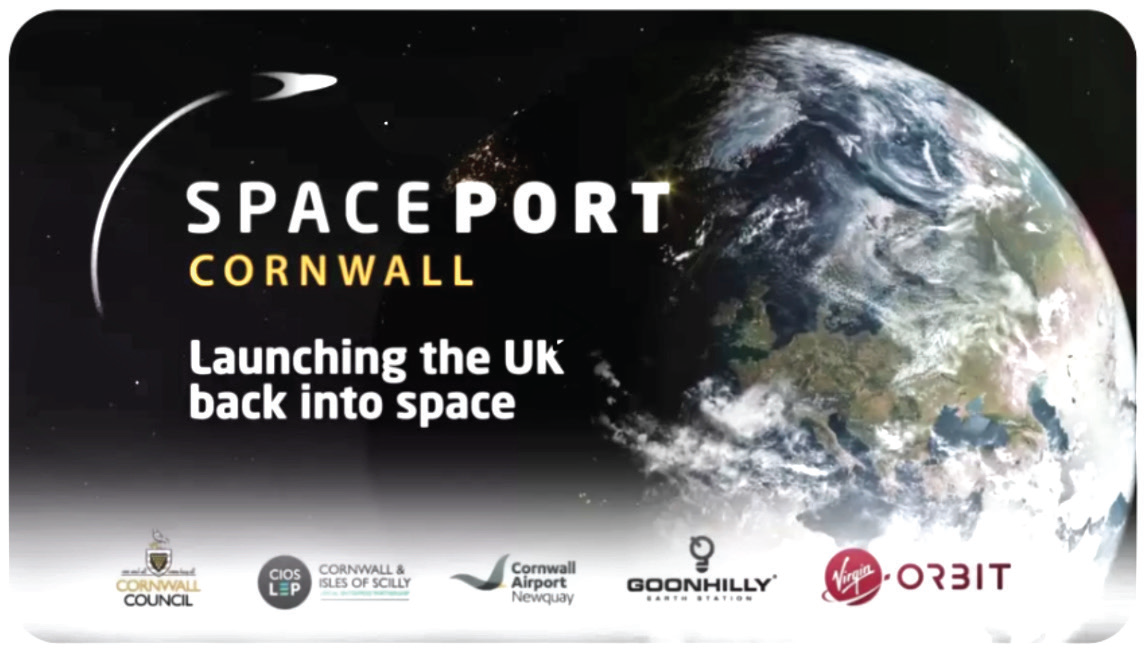The 2Gen PRISMA EO System + HydRON Builds Now Underway By Thales Alenia Space + Teams
Thales Alenia Space, the joint venture between Thales (67%) and Leonardo (33%), has signed a contract with the Italian Space Agency (ASI) to conduct a feasibility study for the PRISMA Second Generation (PSG) hyperspectral Earth observation system.
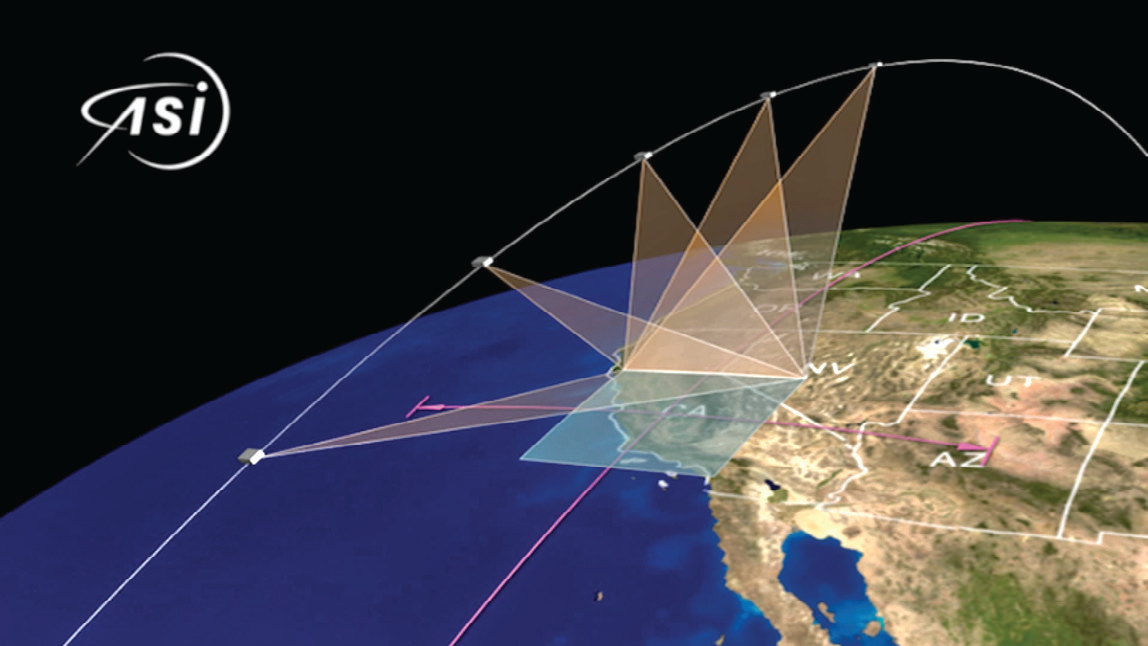
This will be leading a consortium that includes Leonardo, Telespazio (the joint venture between Leonardo (67%) and Thales (33%)), e-GEOS and SITAEL. Lasting nine months, the feasibility study will take an innovative approach to support the development of applications in both national and international markets, such as improved monitoring of natural and atmospheric resources, while providing the data needed to more effectively manage regional development and environmental risks.
The feasibility study will capitalize on increased interest in hyperspectral imaging by consolidating the technological excellence achieved through the PRISMA demonstration mission. It will deliver higher performance in line with the updated application requirements specified by the European Space Agency (ESA) for the upcoming Copernicus Hyperspectral Imaging Mission for the Environment (CHIME), deployed as part of Europe’s vast Copernicus environmental monitoring program.
The main challenge for hyperspectral technology is to capture images with high quality and spatial resolution, with frequent re-visit times and high signal to noise ratio. PRISMA SG will represent a significant step forward over the first-generation PRISMA system, improving spatial resolution via enhanced platform and instrument agility.
Thales Alenia Space in Italy will build the new satellite and take complete responsibility for system design, drawing on its proven experience in Earth Observation (EO) satellites for Copernicus and the first and second-generation COSMO SkyMed satellites. It was also selected by ESA in 2020 to design and build the two CHIME environmental monitoring satellites, with Leonardo contributing to the payload. Leonardo provided the PRISMA hyperspectral instrument, already in orbit, and will also build this payload for PRISMA SG, but offering even higher performance to address the rapidly growing number of government, scientific and industrial applications.
Telespazio will be responsible for designing the PRISMA SG ground segment, while e-GEOS, a joint Telespazio (80%) and ASI (20%) company, will be in charge of market analysis and will also help Leonardo define user requirements.
SITAEL, a space company and a part of Angel Group, capitalizing on the national investments on electric propulsion, will participate in the trade-offs of satellite and platform as well as study the configurations to make PRISMA SG an “all-electric” satellite, thereby ensuring the maneuverability and operational flexibility that only this type of satellites provide. Moreover, thanks to its extensive experience in control electronics, as in the case of the ESA Copernicus CHIME mission, SITAEL will study the sophisticated control unit of the hyperspectral payload, aiming at the scalability of a cutting-edge and consolidated technology that is able to speed up the development time as well as the implementation costs.

Drawing on more than 40 years of experience and a unique combination of skills, expertise and cultures, Thales Alenia Space delivers cost-effective solutions for telecommunications, navigation, Earth observation, environmental management, exploration, science and orbital infrastructures. Governments and private industry alike count on Thales Alenia Space to design satellite-based systems that provide anytime, anywhere connections and positioning, monitor our planet, enhance management of its resources, and explore the Solar System and beyond. Thales Alenia Space sees space as a new horizon, helping to build a better, more sustainable life on Earth. A joint venture between Thales (67%) and Leonardo (33%), Thales Alenia Space also teams up with Telespazio to form the parent companies’ Space Alliance, which offers a complete range of services. Thales Alenia Space posted consolidated revenues of approximately 1.85 billion euros in 2020 and has around 7,700 employees in 10 countries with 17 sites in Europe and a plant in the US.
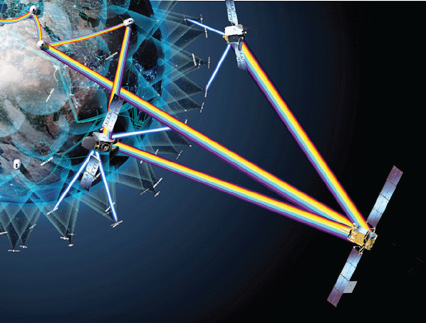
Fiber in the sky for connectivity services thanks
to laser communications. Image is courtesy of ESA.
Additionally, Thales Alenia Space recently kicked-off two projects related to HydRON, being funded by the European Space Agency (ESA). The two contracts will allow Thales Alenia Space, and its partners, to develop its own vision demonstrating the potential of laser-based satellite communication.
The past years have seen a quick expansion of communications infrastructures fueled by the unprecedented rise in the volume of data streams that circle the globe. This demand is also felt in the aerospace sector, where interconnection and integrative network concepts across orbits and across the globe are key to fulfil the demands of the future. Laser-based satellite communication has the potential to bring terrestrial network functionalities to satellite networks in order to help bridge this digital gap for a variety of applications (e.g. virtual private networks, edge computing, 5G/6G services, internet to/from space and airborne assets). This is beyond current satellite capabilities, and ESA’s HydRON (High Throughput Optical Network) vision seeks to develop these for European and Canadian industries.
The vision is part of ESA’s ARTES Advanced Research in Telecommunications Systems (ARTES) 4.0 Strategic Program Line on “Optical & Quantum Communications” – ScyLight program. It is an Optical Transport Network concept combining extremely high throughput Optical Ground-Space Links, high throughput Optical Inter-Satellite Links and on-orbit routing/ switching capabilities.
The resulting space Optical Transport Network aims at seamless inter-operability with existing high-capacity terrestrial networks – the “internet beyond the cloud(s).” In the frame of the two contracts, Thales Alenia Space led a consortium, including GMV, Telespazio, CGI, CRAT, Officina Stellare, DLR-IKN, Kepler Communications, Scuola Superiore Sant’Anna and Open Fiber. This consortium will study the implementation of a HydRON Demonstration System (Phase A/B1) as well as develop a System Simulator Testbed. The Telecommunications and Integrated Applications Directorate (TIA) of ESA is funding both.
The objective of the first contract (HydRON Demonstration System Phase A/B1) is to push the development and validation of the HydRON technology integrated into terrestrial networks at terabit-per-second capacity. It will demonstrate:
• the end-to-end system, including critical key technologies and a minimum viable service
• networking capabilities, including seamless inter-operability with high- capacity terrestrial networks
• operational concept, reflecting an expandable HydRON concept
The Phase A/B1 study will last 18 months to propose an implementation concept to demonstrate the HydRON vision, tentatively composed of two space-based laser communication payloads in LEO and GEO, interconnecting with each other, several optical ground stations and terrestrial fibre optics networks. Their completion will pave the way for a subsequent implementation phase (Phase B2/C/D/E1, launch in 2026), subject to ESA member states decision at ESA’s next Council Meeting at ministerial level in November 2022. The objective of the second contract is to develop a HydRON System Simulator Testbed to:
• consolidate HydRON vision, system functionalities & end-to-end system architecture
• support HydRON Demonstration System trade-offs and aseline selection
• verify optical communications network solutions and technologies in a representative end-to-end network involving interfaces with high- capacity terrestrial networks evaluate performance of optical satellite networks in scenarios with many degrees of freedom and under a large number of stochastic environment variables.
Rocket Lab Adds Their Second, Electron Launch Pad With Pad B In New Zealand… First Mission Already Scheduled
Rocket Lab USA, Inc. (Nasdaq: RKLB) has completed their second orbital launch pad at Launch Complex 1 in New Zealand – the Company’s third dedicated pad for its Electron rocket – and confirmed the new pad’s first mission.
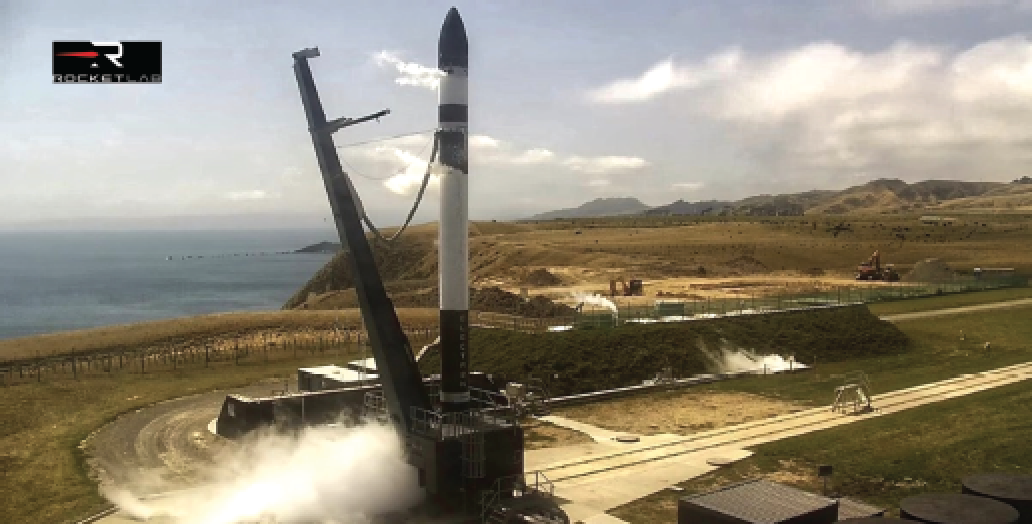
Pad B is based within Rocket Lab Launch Complex 1, the world’s first private orbital launch site, located in Mahia, New Zealand. The new pad is Rocket Lab’s third for the Company’s Electron launch vehicle and joins the existing Pad A at Launch Complex 1 and a third launch pad at Rocket Lab Launch Complex 2 in Virginia, USA. With two operational pads within the same launch complex, Rocket Lab doubles the launch capacity of its Electron launch vehicle.
With two launch pads and private range assets at Launch Complex 1, concurrent launch campaigns are now possible from the site. This enables resilient access to space by accommodating tailored customer requirements or late changes to a spacecraft while keeping Rocket Lab’s manifest on schedule. Operating two pads also eliminates pad recycle time, ensuring a launch pad is always available for a rapid-response mission.
Launching from a private launch complex, Rocket Lab is also able to avoid the lofty range fees and overheads typically associated with shared launch sites, resulting in a cost-effective launch service for satellite operators.

Rocket Lab Adds Their Second, Electron Launch Pad With Pad B In New Zealand… First Mission Already Scheduled Rocket Lab founder and CEO, Peter Beck, said, “A reliable launch vehicle is only one part of the puzzle to unlocking space access – operating multiple launch sites so we can launch when and where our customers need to is another crucial factor. We are proud to be delivering responsive space access for our customers, making back-to-back missions possible within hours or days, not weeks or months. Even with just one pad at Launch Complex 1, Electron quickly became the second most-frequently launched U.S. rocket every year. Now, with two pads at Launch Complex 1 and a third in Virginia, imagine what three pads across two continents can do for schedule control, flexibility, and rapid response for satellite operators globally.”
More than 50 local construction workers and contractors were involved in the development of Launch Complex 1 Pad B, which includes a 66-ton launch platform and 7.6-ton strongback customized to the Electron launch vehicle. With Pad B operational, several roles are available now at Launch Complex 1 to support Rocket Lab’s increased launch cadence.
Rocket Lab’s Vice President – Launch, Shaun D’Mello, said, “With Pad B we’ve kept things efficient. Its systems and layout replicates Pad A and shares much of Pad A’s infrastructure including the Electron vehicle integration hangar, runway to the pad, and our own range control facility. With that we’ve been able to double our operational capacity – all on a concrete area smaller than the average tennis court. I’m hugely proud of what the team has achieved: building and bringing a second pad online, all while continuing to service and operate Pad A for our Electron launches to date, and in the middle of a global pandemic no less.”
About Launch Complex 1
Located on the Mahia Peninsula in New Zealand, Launch Complex 1 is the world’s first and only private orbital launch site. As the launch site for Rocket Lab’s Electron rocket, Launch Complex 1 has supported the successful delivery of more than 100 satellites to space across a range of missions for environmental and marine monitoring, Earth observation, science and research, internet connectivity, technology research and development, and national security. An FAA-licensed spaceport, Launch Complex 1 is capable of supporting up to 120 launch opportunities every year. From the site it is possible to reach orbital inclinations from sun-synchronous through to 30 degrees, enabling a wide spectrum of inclinations to service the majority of the satellite industry’s missions to low Earth orbit. Located within Launch Complex 1 are Rocket Lab’s private range control facilities, three satellite cleanrooms, a launch vehicle assembly hangar which can process multiple Electrons for launch at once, and administrative offices. Operating a private orbital launch site alongside its own range and mission control centers allows Rocket Lab to reduce the overhead costs per mission, resulting in a cost-effective launch service for satellite operators.
Rocket Lab will not be attempting to recover Electron for this mission.
Kleos Space Receives A Data Evaluation Contract
Kleos Space has received a data evaluation contract from Advanced Ground Information Systems, Inc. (AGIS).
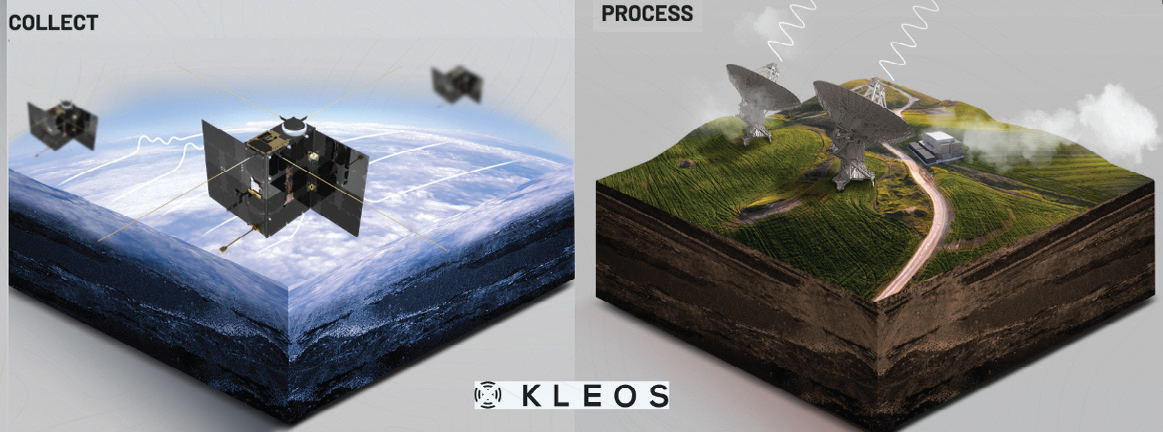
AGIS simultaneously processes up to 200,000 real-time sensor reports to provide command and control communication capabilities to U.S. military, government and first responders. The firm’s Command, Control, Communications, Computers, Cyber, Intelligence, Surveillance and Reconnaissance (C5ISR) system enables data interoperability between U.S. and NATO C5ISR systems to provide a common operational picture.
AGIS’ C5ISR system will be using Kleos’ electronic intelligence (ELINT) data to complement other intelligence data sources to provide hostile and illegal shipping awareness to its customers with the ability to direct forces.
Under the contract, AGIS will have access to Kleos’ Guardian Locate data product for evaluation purposes. The product delivers processed radio frequency transmissions collected over key areas of interest, irrespective of the presence of positioning systems.

Photo of Kleos Space Patrol Mission smallsats, courtesy
of the company.
Kleos’ Chief Revenue Officer, Eric von Eckartsberg, said, “AGIS has a long history of providing critical data to those in the field. We’re excited for our geolocation sensor data to be integrated into their command-and-control systems, which will help bringing Kleos’ products to a wide array of government customers around the world. Kleos’ data complements existing datasets and can be used to validate or tip and cue other sources to improve the intelligence, surveillance and reconnaissance capabilities.”
AGIS’ CEO, Cap Beyer, said, “We are looking forward to working with Kleos, and providing users the ability to integrate Kleos’ intelligence information with a mature multinational C5ISR system and other intelligence sources.”
Kleos’ radio frequency geolocation data enhances the detection of illegal activity, including piracy, drug and people smuggling, border security challenges and illegal fishing. Its global activity-based data is sold as-a-service to governments and commercial entities, complementing existing commercial datasets.
Kleos currently has eight satellites on-orbit with launches for the company’s Patrol and Kleos currently has eight satellites on-orbit with launches for the co Observer Missions scheduled for April and June 2022, respectively.
Mynaric Receives Optical Comms Contract
Mynaric was been awarded a contract by the European Space Agency (ESA) to analyze, design, build and test on a laboratory model an end-to-end optical communication system that can achieve data transmission speeds of 1 Terabit per second (Tbps) — this project enhances Mynaric’s commitment ≠to innovation and its mission to create a truly connected planet.
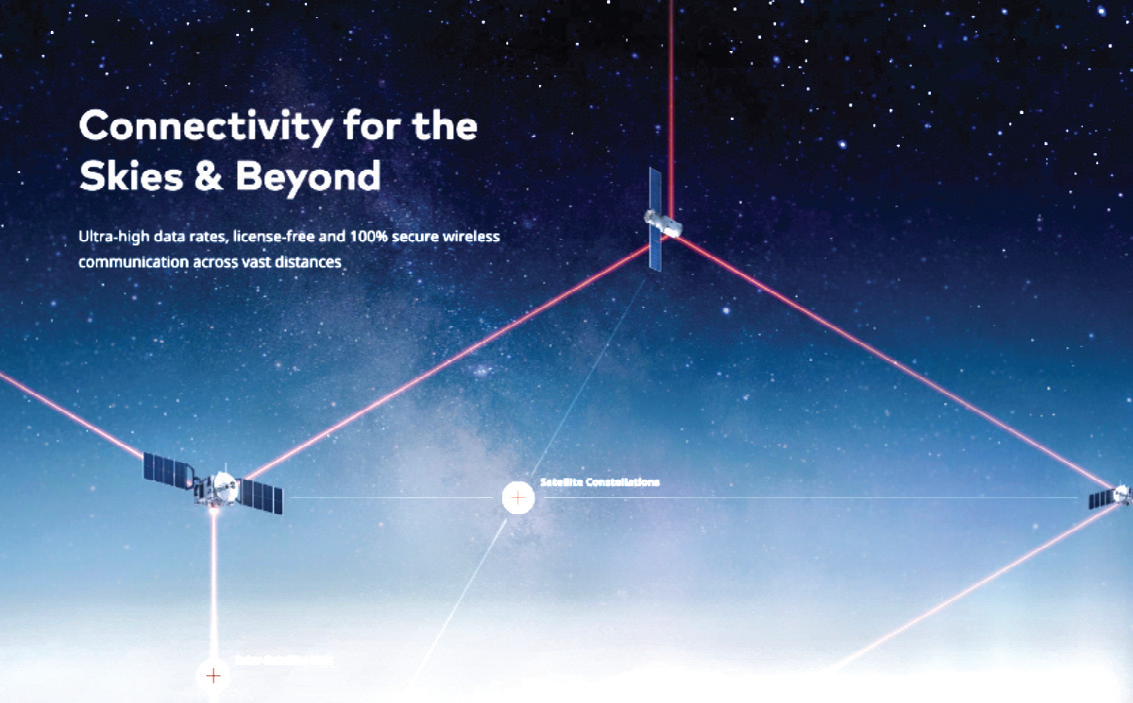
Mynaric was awarded the contract through a competitive, open call for proposals. The project, named Pegasus, is allocated within ESA’s ScyLight program which supports the research, development, and evolution of optical communication technologies and provides flight opportunities for on-orbit verification. ESA’s “High Throughput Optical Network” (HydRON) program is, additionally, creating a space-enabled, optical network, ensuring that people can connect even in remote locations.
The benefit of establishing terabit speed backhaul in space is that it allows constellations to offer the equivalent ultra-high speeds found in ground-based networks. Moving terabit bandwidth into LEO, MEO and GEO provides an alternative backhaul capacity for industry and commercial applications for whom current speeds are not sufficient.
Offering these speeds in space also ensures these industries and applications are not reliant on ground-based networks susceptible to natural disasters or other ground-based activity that threatens connectivity.
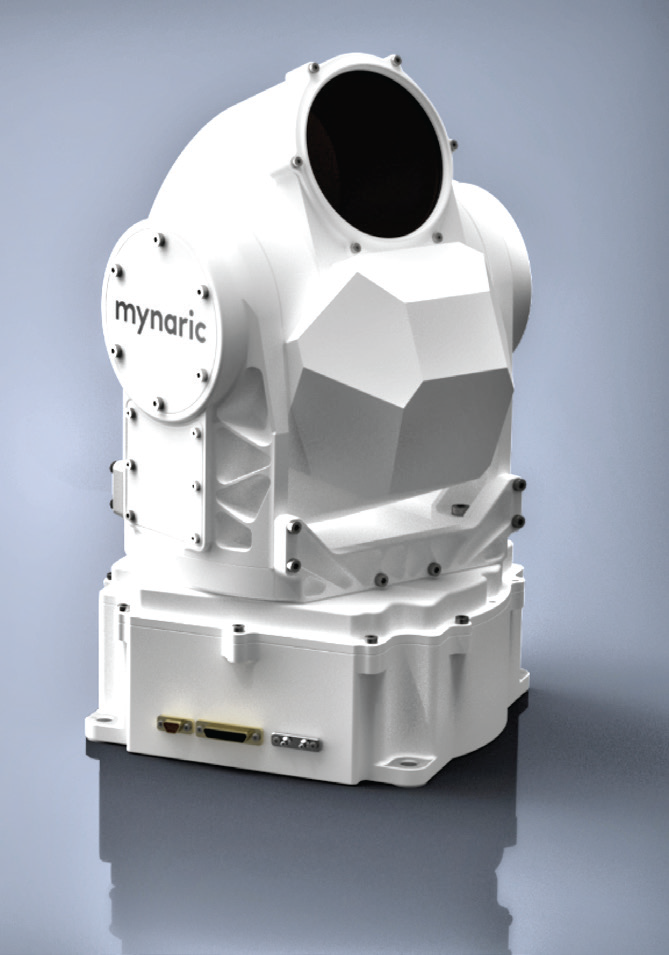
Mynaric’s CONDOR Mk3 supports link distances
>7,500 km with a flexible data rate coverage from
100 Mbps up to 100 Gbps.
In August 2021, Mynaric launched its new, ultra- fast and scalable optical communications terminal, the CONDOR Mk3 based on customer and market insights. Key to the CONDOR Mk3’s entry into the market was its scalability of both speed and production.
With configurable data rate speeds between 100 Mbps and 100 Gbps, the terminal ensures both standardized compatibility and delivers higher speeds for different applications. Mynaric’s CONDOR Mk3 supports link distances >7,500 km with a flexible data rate coverage from 100 Mbps up to 100 Gbps.
“As part of our product development roadmap, our engineers and product development teams are revolutionizing the industry and realizing the fullest potential of optical communication systems,” said Bulent Altan, CEO of Mynaric.
“We are able to take theory and make it a reality through thorough planning, development and testing. The work we do today to increase data speeds will help drive connectivity for not only Europe, but the entire planet.”
Mynaric (Nasdaq: MYNA; Frankfurt Stock Exchange: M0Y) produces optical communications terminals for air, space and mobile applications. Laser communication networks provide connectivity from the sky, allowing for ultra-high data rates and secure, long-distance data transmission between moving objects for wireless terrestrial, mobility, airborne- and space- based applications. The company is headquartered in Munich, Germany, with additional locations in Los Angeles, California, and Germany, with ad Washington, D.C.
The UK’s Spaceport Cornwall Edges Closer To Initial Launch

Set to deliver the first ever launch from UK soil this summer, Spaceport Cornwall is laying the foundations for long-term, responsible, smallsat services from Cornwall Airport Newquay with the build of the Center for Space Technologies.
This state of the art facility is a nationally unique asset where the value of launch from Cornwall will realize its full potential. The Center comprises two main facilities: the Space Systems Integration Facility, where satellites will be integrated into the fairing of the rocket; and the Space Systems Operation Facility, an adjacent R&D work and office space.

The Center for Space Technologies will be home to academic partners, SMEs, multinationals and environmental organizations who will come together and collaborate on responsible launch practices and applications — showcasing how space can help solve some of our greatest challenges on Earth.
The facilities are key to Cornwall’s space cluster development and continued growth for cutting-edge practice within the region, and will serve as a catalyst to attract space businesses to work alongside academia in this unique capacity. Businesses from across the UK space sector and beyond, including satellite manufacturer D-Orbit, have already the UK space sector and beyond, including satellite manufacturer D-Or committed to using the center as a base for innovation and advancement. Set to deliver the first ever launch from UK soil this summer, Spaceport Cornwall is laying the foundations for long-term, responsible, smallsat services from Cornwall Airport Newquay with the build of the Center for Space Technologies.
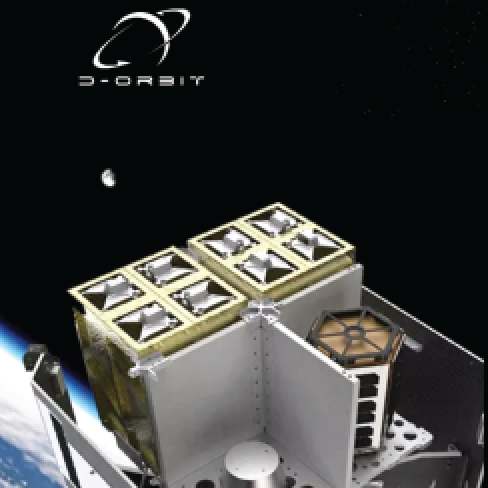
This state of the art facility is a nationally unique asset where the value of launch from Cornwall will realize its full potential. The Center comprises two main facilities: the Space Systems Integration Facility, where satellites will be integrated into the fairing of the rocket; and the Space Systems Operation Facility, an adjacent R&D work and office space.
The Center for Space Technologies will be home to academic partners, SMEs, multinationals and environmental organizations who will come together and collaborate on responsible launch practices and applications — showcasing how space can help solve some of our greatest challenges on Earth.
The facilities are key to Cornwall’s space cluster development and continued growth for cutting-edge practice within the region, and will serve as a catalyst to attract space businesses to work alongside academia in this unique capacity. Businesses from across the UK space sector and beyond, including satellite manufacturer D-Orbit, have already the UK space sector and beyond, including satellite manufacturer D-Or committed to using the center as a base for innovation and advancement.
